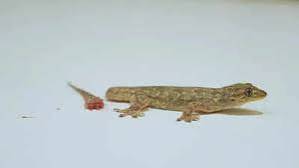How Many Times Can Lizards Regrow Their Tails?
Lizards are fascinating creatures with an impressive ability to regenerate lost body parts, especially their tails. This remarkable regenerative ability has captivated scientists and nature enthusiasts alike. While not all lizard species can regenerate their tails, many possess the unique ability to do so. However, the question remains: How many times can a lizard regrow its tail?
The Regeneration Process
Tail regeneration in lizards is a natural response to injury, often triggered by a predatory threat. If a predator grabs a lizard by the tail, the lizard can shed its tail in a process known as autotomy. The tail breaks off at a specific point where muscles, bones, and nerves are weakest, allowing the lizard to escape while the detached tail wriggles and distracts the predator. This defense mechanism is not only a lifesaver but also sets the stage for one of nature's most extraordinary regenerative processes.
Once the tail is lost, the lizard begins to regenerate a new one. This process involves the regrowth of tissues, including skin, muscles, nerves, and bones. At the base of the wound, a special type of cells known as blastema forms. These cells rapidly divide and differentiate into the various components needed to rebuild the tail. Within weeks or months, depending on the species and environmental factors, a new tail begins to emerge.
How Many Times Can a Lizard Regrow Its Tail?
The ability to regenerate a tail is not infinite. Most lizards can only regrow their tails a few times during their lives. Typically, lizards can regenerate their tails two to three times before their ability diminishes. Each successive tail regeneration is generally not as robust as the previous one, with the new tail often being shorter, less functional, and not as well-formed.
After several regrowth cycles, the lizard may experience difficulty in growing a functional tail. The tail that regenerates may be shorter and less structurally sound, lacking certain features like the vertebral column, which is often replaced with cartilage instead of bone. Over time, this may affect the lizard’s ability to store energy or balance, which are some of the tail's key functions.
Additionally, as the lizard ages, its regenerative capacity also decreases. Younger lizards tend to regenerate more efficiently than older ones. This age-related decline in regeneration is similar to other species, where cellular repair and regeneration become less effective with time.
Species Variations
Different species of lizards exhibit varying regenerative abilities. Some species, such as the common gecko and anoles, are particularly known for their regenerative prowess. Geckos, for example, can regrow their tails multiple times and are capable of regrowing fully functional tails, though, as mentioned, these will often become progressively smaller with each regrowth cycle.
On the other hand, species like the chameleon can also regenerate their tails but may do so less frequently and with less success in terms of functionality and size. While tail regeneration is common in many lizards, some species, especially those in the Iguana family, lack this ability entirely.
Conclusion
In conclusion, while many lizards can regrow their tails after losing them due to injury or predation, they are usually limited to two to three regrowths. The tail that regenerates is often smaller and less functional than the original, reflecting the biological cost of such regeneration. The ability to regrow tails is a remarkable evolutionary trait that helps lizards survive in the wild, but like many other forms of regeneration in the animal kingdom, it comes with limitations. The fascinating nature of this process continues to be a subject of study for scientists, as they look to understand how lizards and other animals regenerate lost body parts, and perhaps apply this knowledge to human medicine.


